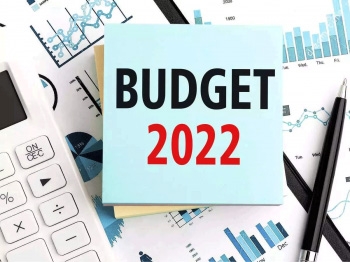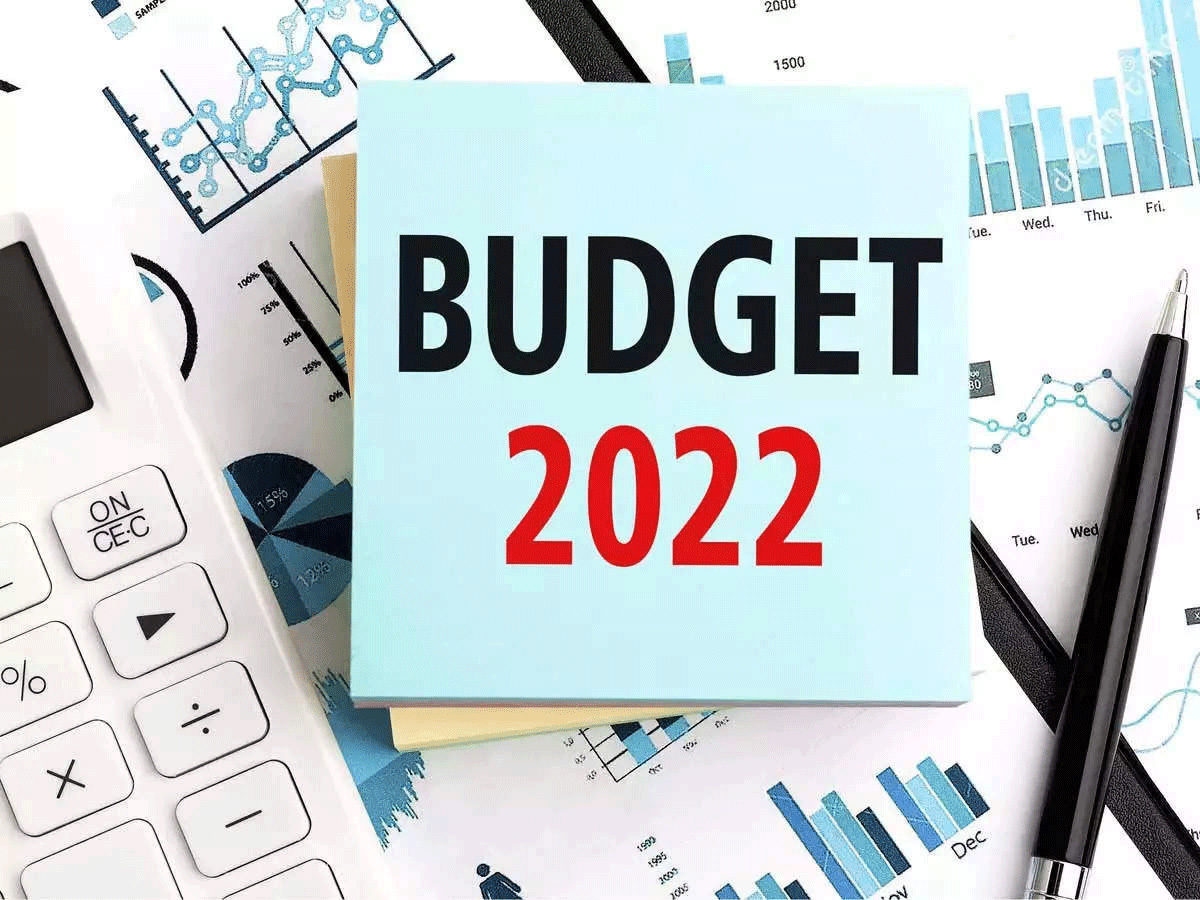
.png) Dr Prakash Louis
Dr Prakash Louis

The Budget 2022-23 has graduated India from Achche Din (good days) to Amrit kaal (golden days). The unplanned lockdown, unprepared closure and opening, unexpected loss to employment, education, empowerment, health care, agriculture, industries, human resource, etc. continue to haunt over 80% of the masses. It has driven at least 60% of the most vulnerable and marginalized to starvation and death. The restrictions imposed in the name of the pandemic has hit the common people.
The country is going through a huge crisis due to the following: hate mongering, mob lynching, cultural policing, religious bigotry, division on the basis of caste, class, ethnicity, gender, religion, region, background, political affiliations and orientations. Popular pronouncements, lies and falsehood, aggressive and abusive attack on others of different religion and political affiliation have become the dominant mode of communication and actions. In this background, the common and conscious citizens hoped that the budget would focus on agricultural revival, livelihood, employment generation, support to small scale industries, self-employment, etc. Along with the children, youth and women, the Dalits, the Tribals, minorities and most backward castes had hoped for specific income generation schemes, education scholarships, and employment possibilities. But all these dreams seem to be shattered.
As pointed out by economists, the allocation for procurement by FCI and under decentralisation procurement scheme has been reduced by about 28 per cent at a time when farmers are struggling for a legally guaranteed MSP. Allocation of funds for fertilizer subsidy has been reduced by 25 per cent. Under PM-KISAN Scheme, 12.5 crore farmer households are supposed to be provided Rs. 6,000 each which requires an allocation of Rs. 75,000 crores. However, only Rs. 68,000 crores have been allocated. Allocation for the crop insurance scheme has also fallen by about 500 crores. In a country where over 70% of the population is dependent on agriculture and if farm sector is neglected to promote corporate farming, the future of the citizens is at stake.
Children who are the present and future of this country have been also overlooked. In recent years, the government has not spent even the meagre allocation for welfare of children. The revised estimates for expenditure on welfare of children is Rs. 5,700 crores less than what was budgeted. Nothing has been done to help children to cope with the devastating impact of closure of schools and anganwadis. Both education and mid-day meal have been severely affected during the pandemic. The budget has given a double blow to the children since their demand for education, at least one good meal in a day, skill development, etc. are thrown to the winds.
Allocation of funds for the welfare of Scheduled Castes and Scheduled Tribes shows a marginal increase in absolute figures but factoring inflation it has come down in real terms. It is important to raise the questions how was the budget prepared which took into account the vulnerability of the Dalits and Tribals, especially in the time of lockdown? A careful reading of the budget shows that the question is not about the figures but about the process of budgeting for livelihoods. Except for a few schemes, all the schemes have been made in such a way that the livelihood of these vulnerable communities is not related to them.
In a total outlay of Rs. 39,44,909 crores, the Special Component Plan for the Scheduled Castes is Rs. 1,42,342 which is just about 3.61% of the allocation and for the Tribal Sub-Plan it is mere Rs. 89,265 crores which is just 2.26%. The SCs and the STs constitute over 16.3% and 8.2% of the total population. The budgeted allocated for them is nowhere near to this. Further, it is a known fact that even what is allotted to their welfare is mostly used for other purposes.
Like ‘Amritkaal’, the mid-day meal (MDM) is renamed as PM Poshan. But the allocation is not raised beyond Rs. 10,234 crores despite 35 per cent of children not receiving MDM during the last year. The Finance Minister talked about Narishakti upgrading 2 lakh anganwadis but the allocation is frozen at the revised estimates at Rs 20,000 crores. Both for the children from weaker sections and Aangawadi Sevikas, any increase would have meant some meal and some money for family expenditure.
Over the last two years, there has been a huge cut in LPG subsidy. Last year, allocation was cut by 60 per cent and another 60 per cent cut has been inflicted in the budget for 2022-23. Huge publicity was made when the subsidy was announced. Huge cut-outs of politicians were placed to propagate this. While the cut-outs are there the subsidy was stopped by the Central government from May 2020. The prices of LPG cylinders are about to touch Rs 1,000. In addition to soaring prices, the huge jump in petrol and diesel prices has hit the common masses the most.
The distressed migrants, daily wage earners, domestic workers and construction workers were hugely hit by the lock down and other restrictions for the last 2 years. No provision is made for them in terms of cash transfer or food distribution. In some states, as the elections are approaching, a meagre amount of Rs. 1,000 has been transferred to some accounts. But no new names are included. Also, if the person who has registered for this scheme is a minority, then he is not provided this money. Strangely enough, there is no new allocation budgeted for the labourers who were registered through e-shram portals.
The Mahatma Gandhi National Rural Employment Guarantee Act (MGNREGA) is one of the most beneficial schemes for the rural poor. But the government allocated only Rs 73,000 crore which is 25% less than revised estimate for 2021. Managing Director of the International Monetary Fund Gita Gopinath had told that the government should adequately fund the job guarantee scheme. To save the rural masses from starvation due to loss of jobs and pandemic, civil society has been demanding increasing the number of days from 100 to 150 days at least and also ensure that the payment is made on time. But instead of doing this, the government has reduced the possibilities of more employment and payment.
Education has been going through crisis due to insufficient allotment of funds and misuse of the amount allotted. Surveys have found serious gaps in learning – even to the extent of loss of the ability to read – among students who do not have the means or space to attend online classes regularly. Civil society in Jharkhand protested and demanded opening of schools. In terms of budget, in the last financial year, the government spent less on education (Rs 88,002 crore) than it had originally planned (Rs 93,224 crore). The reduced spending may have been due to the challenges posed by the pandemic. Keeping that in mind the government says it will spend Rs 1,04,278 crore on education.
The Minority Coordination Committee has pointed out that the budget has allotted only 0.23% to the Ministry of Minority Affairs. It is significant to note that the minorities constitute 19.3% of the population. Hence, there was a demand of Rs. 1 lakh crore in this year’s budget but this Ministry got only 5,020 crores. There is a Rs. 8.58 crore reduction in the budget of special program for minorities, Rs. 1 crore reduction in the budget of the Quami Waqf Board Progressive Scheme, Rs. 41 crore reduction in the National Manzil Scheme, shortfall of Rs. 5.50 crore in the leadership development of minority women scheme. There is a reduction of Rs. 14 crores in the educational scheme for minorities and madarasas, there is a shortfall of Rs. 41.67 crore for social security, a reduction of Rs. 41 crore in skill development on which the govt has been emphasizing.
One silver line seems to be an initial allocation of Rs 1,500 crore to the Prime Minister’s Development Initiative for North East Region. The scheme will be implemented through the North Eastern Council. The scheme aims to enable “livelihood activities for youth and women”. People from northeast are saying that there are other sections whose interests have been actively hurt or alternatively no positive action has been chalked out in their favour.
Gandhiji had declared that India lives in its villages. Hence, rural development is one of the most important areas which is expected to lead development in this country. But it is deplorable that the government has not increased planned spending despite overshooting the same amount last year in rural development. The allocation to the rural development ministry for the next year is Rs 1,38,203.63 crore, though last year it spent Rs 1,55,042.27 crore.
In contrast to all these, it is appalling that during the last two years of pandemic, the rich have become richer. According to Oxfam, wealth of India’s richest families reached a record high in 2021. The top 10 people hold 57 per cent of the wealth. Yet, there is no proposal to impose tax on these super profits and use these resources to provide relief to the vast majority of suffering masses. The Finance Minister said that the four focus areas of the budget are private investment in transport sector under the PM Gati Shakti project, inclusive development, optimising productivity and boosting financial investment. She also announced 400 new generation trains and 25,000 km of highways under this plan to attract private investments for the transport sector. Hence, these private players will benefit in the name of national development.
One is not sure if the ‘Amrit kaal’ would arrive or not. But what is sure is that millions of Indians are facing starvation and death, that is akaal. This is because no proper allocation has been made to pro-poor, pro-citizen projects. And some of the allotments will be spend in other heads especially those that are set aside for the Dalits and Tribals. The common and conscious citizens are demanding the government to control inflation, direct cash transfer of Rs. 7,500 per month to all families outside the income tax bracket, distribution of free food kits to the most vulnerable and minimum support price to the farmers.